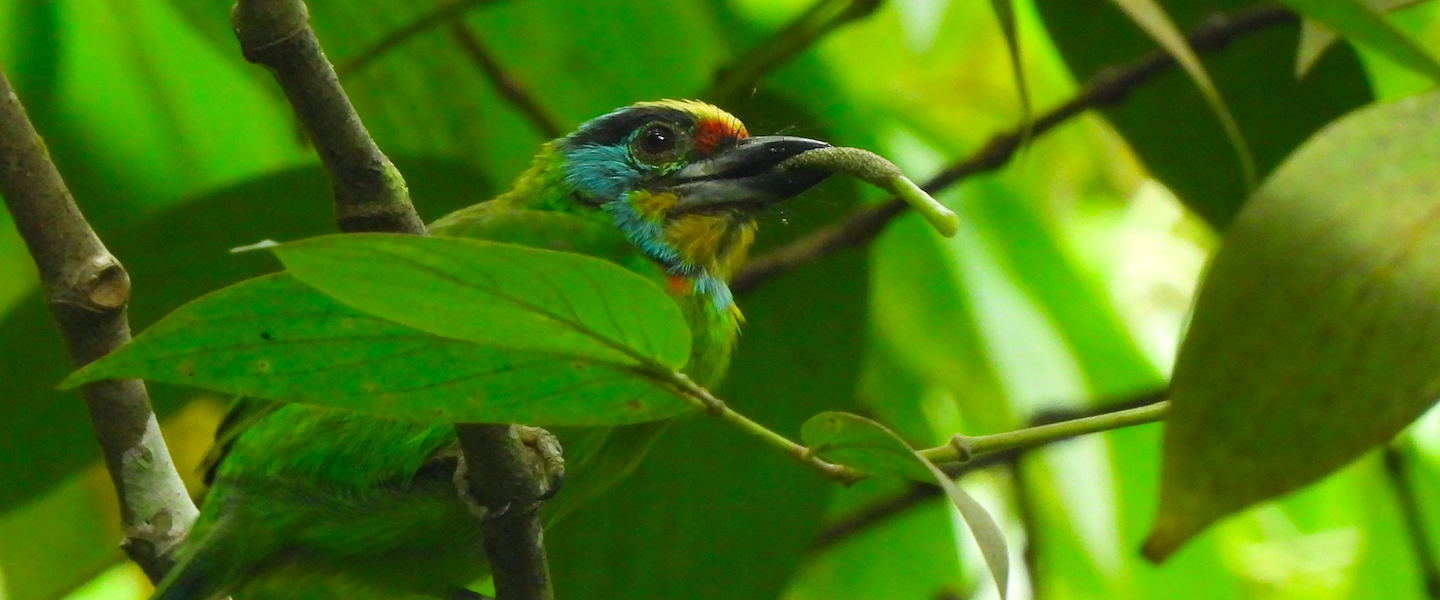March this year has brought rains to southeast Spain — finally. Weather has not been too pleasant to be out and about everyday but fieldwork has kept me busy out in the mountain lately. However, I’ve been quite busy while in town. Last weekend I transferred to a new flat and had some friends over helping us. Tati Pessano, my flatmate and workmate, spent her weekend in the new flat and paid a visit to El Hondo. On her visit, she spotted a pair of bearded reedlings (Panurus biarmicus) at the reeds from one of the watchtowers on the south side of the wetland.

Yesterday, Claudio Amorós and Darío Gijón came over and helped move bed-frames and mattresses from different places to our flat. Tati explained her find to our surprise — even if we hear about some sights every now and then, none of us had ever spotted a bearded reedling in the region before. Lucky Tati also got herself a flock of Spanish sparrows (Passer hispaniolensis) in the reeds, yet another species we have not yet seen in El Hondo area either.

Once the furniture hassle was done, we had lunch together in the new place. The weather did not really obliged, but we left to El Hondo despite the drizzle. We parked close to the south gate and walked across the ditch, which was particularly full of running water. Fields are green yellow, filled with mustard-like yellow flowers, announcing the imminent beginning of spring. We remained silent while walking through the reeds, bumping into flying flocks of red-crested pochards (Netta rufina) and a flock of house sparrows (Passer domesticus) foraging on the ground, as well as a reed bunting (Emberiza schoeniclus) feeding on a reed flower.
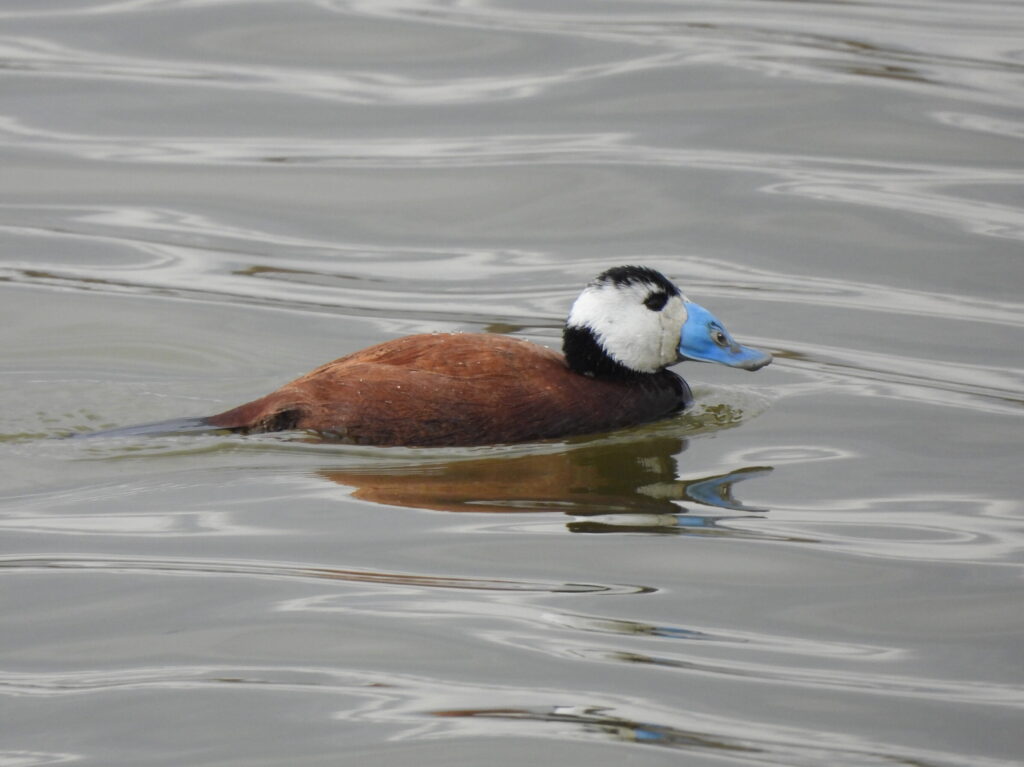
The views from the watchtower are as good as El Hondo gets in early March: tens of greater flamingos (Phoenicopterus roseus) forage all around the place, numerous pairs of eared grebes (Podiceps nigricollis) are busy with their displays, and several shovelers (Spatula clypeata), white-headed ducks (Oxyura leucocephala) and common pochards (Aythya ferina) are also readily seen. Flyover western marsh harriers (Circus aeruginosus) and Eurasian kestrels (Falco tinnunculus) patrol the area as well.
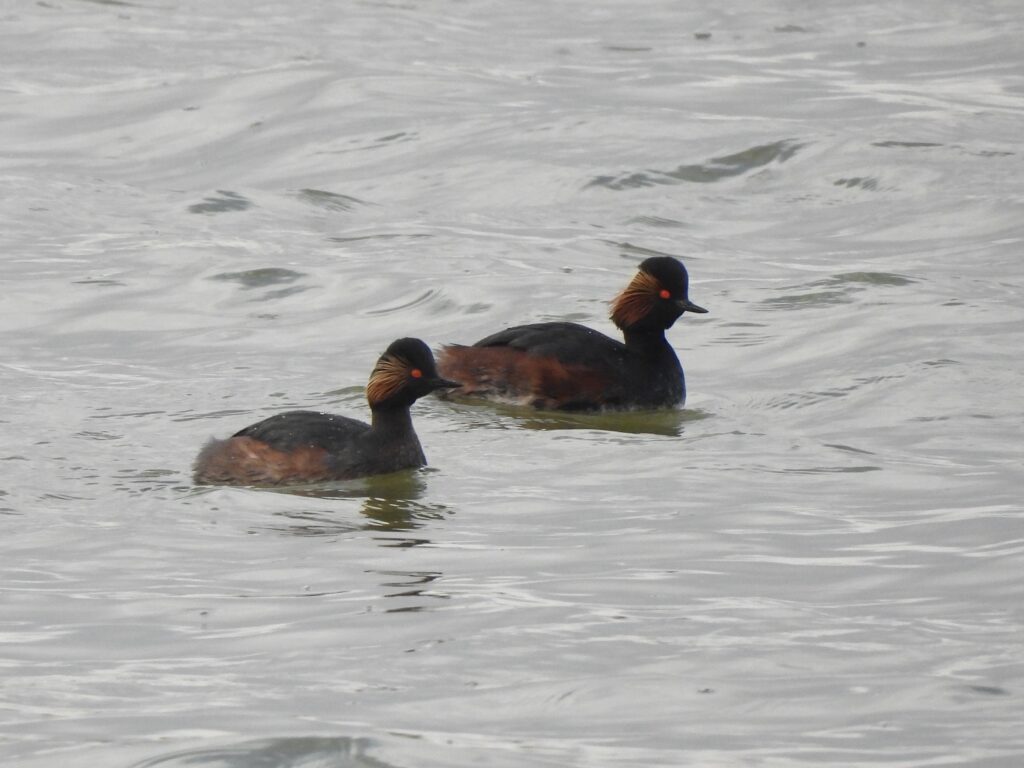
As soon as we sit in the observatory, we start noticing the arrival of spring. A flock of hundreds of newcoming birds include barn swallows (Hirundo rustica), red-rumped swallows (Cecropis rufula), house-martins (Delichon urbicum), and my personal first bank swallows (Riparia riparia), pallid swifts (Apus pallidus) and common swifts (Apus apus) of the season. Farther away, the first whiskered tern (Chlidonias hybrida) sports its stunning summer looks while flying over the water.
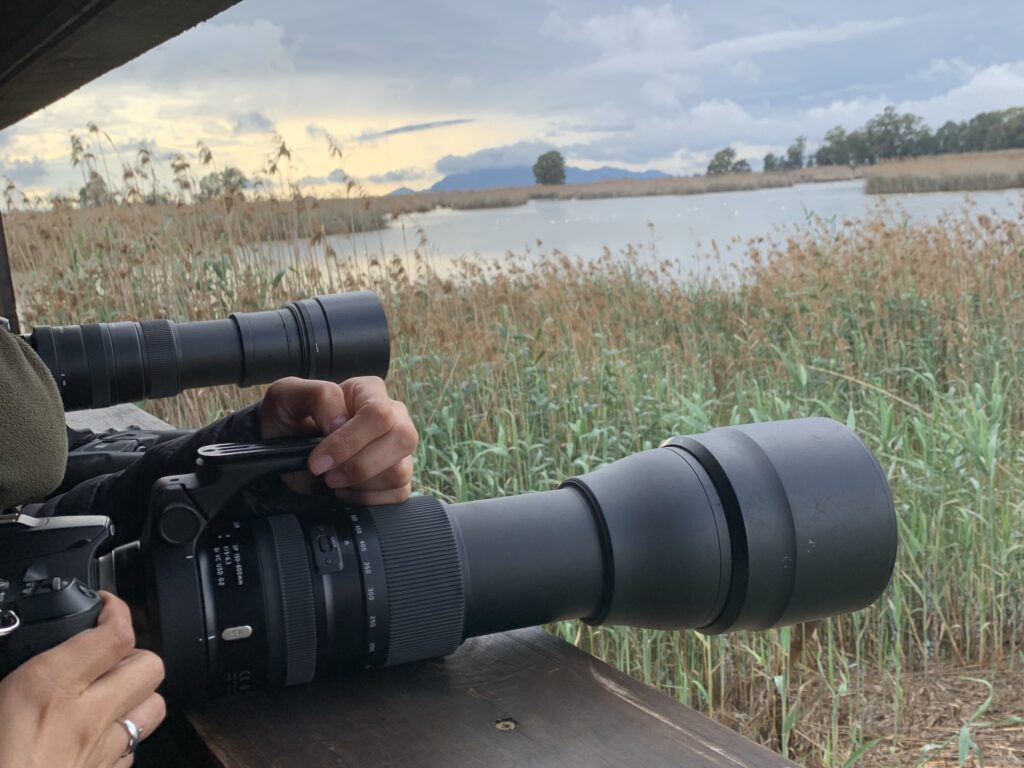
Now the game is all about sitting in silence and waiting. The reeds hold still some good numbers of wintering chiffchaffs (Phylloscopus collybita), though more silent than usual. Sudden moves in the reeds reveal some skulky common reed warbler (Acrocephalus scirpaceus), this being a summer visitor of which we had already heard several singing along the reeds. Some other birds could also be heard from the reeds: little bitterns (Botaurus minutus), little grebes (Tachybaptus ruficollis) and moorhens (Gallinula chloropus).
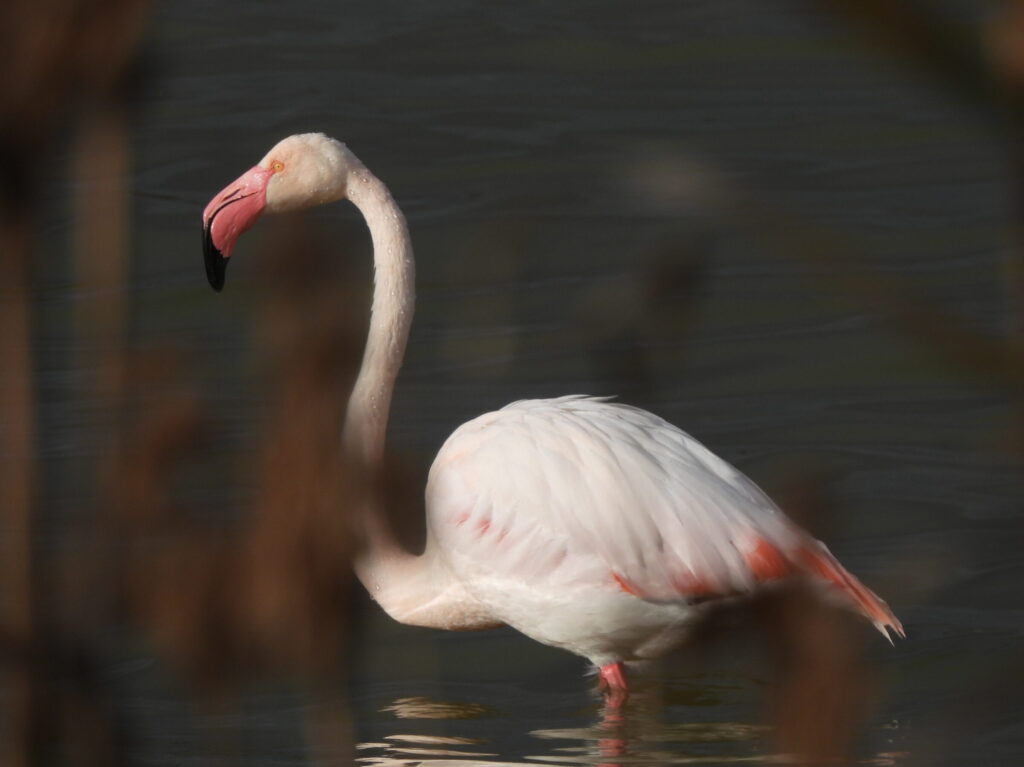
At a certain point, Tati notices a long-tailed bird quickly flying into the reed island in front of us. Nervous for a while, we comprehensively scope the area. It still took quite a while until Darío could confirm it: two bearded reedlings skulked deep into the bases of the reeds in silence. The male and female Tati had seen the day before showed up just some meters in front of us. Awesome!
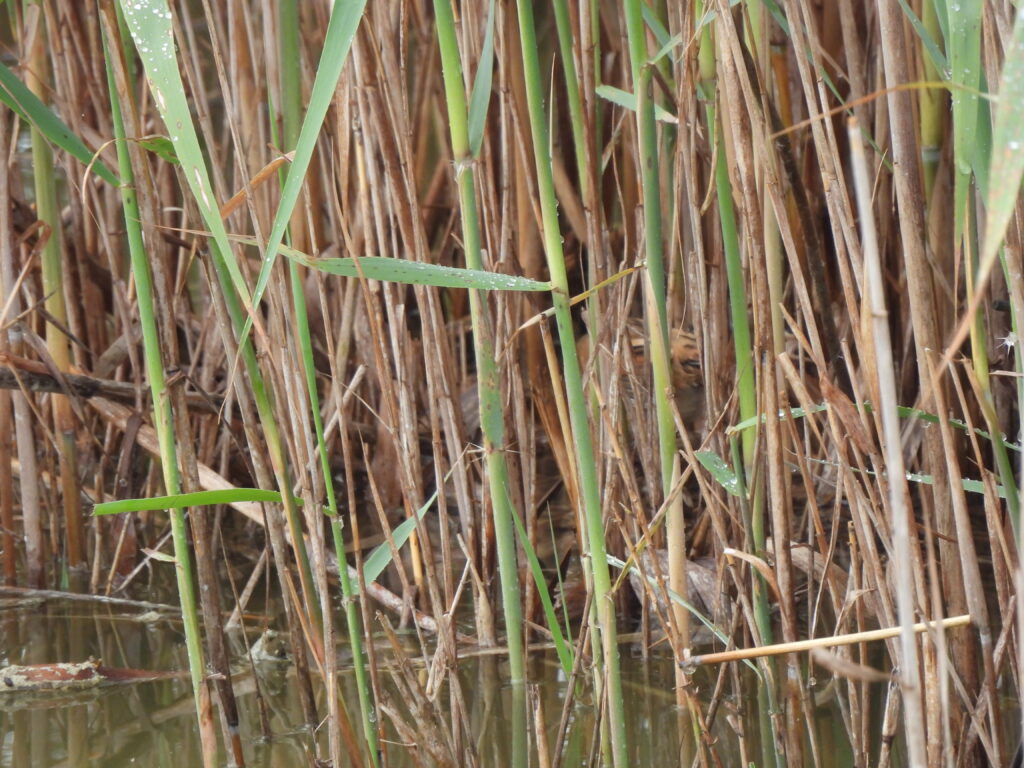
Most of such time, it was only possible to point out the reed where the birds just jumped into. Only carefully following the moving reeds we could secure some very poor views, most often of their back pattern as the buff tones of their plumages conceal them in the reedbed. Tati had advised us to remain silent as these birds seemed secretive and skittish, and indeed they faded away into the reeds when we were giving instructions to each other to find them. Fortunately, all of us managed to glimpse them.

Some drizzle showered the area on and off while we waited, hoping we could get some better views. Chiffchaffs and reed warblers kept our senses on during the long wait, but we eventually got some more views. Although the birds showed up right in front of the setting sun light, they started feeding on the reed flowers, skulking through the reed tops and giving some decent views. I had never seen bearded tits (as they are also known) feeding, so it was great to observe their endeavors, on top of the fact that all of this happened in El Hondo.

The uniqueness of the species added up to the excitement — currently, the bearded reedling is considered the only member of its own monotypic family, with a patchy distribution from the Iberian Peninsula all the way to Far East Asia. Besides, its looks are unlike any other bird, especially in their habitat and distribution.
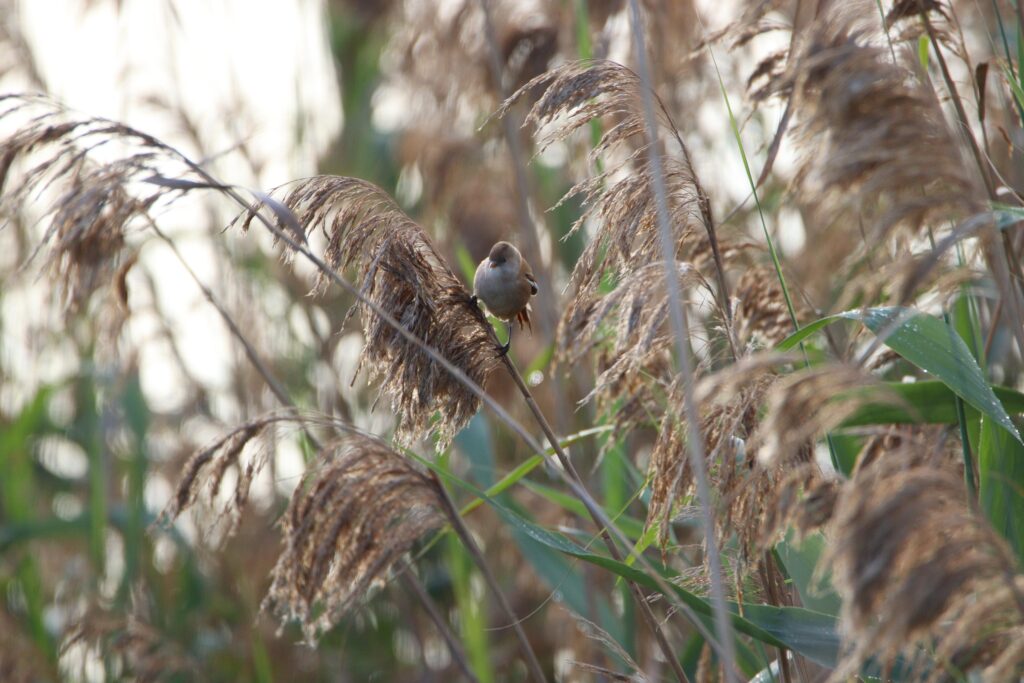
Finding these birds in our region has been very exciting. They seem to do quite poorly despite the massive reedbed extension covering the public part of El Hondo and other Valencian wetlands. Most reliable views often involve pairs maintaining their brood on a nearby nest, so one only hopes this pair is deciding to settle in and stay around over the season. For the time being, my friends have been kind enough to share their fantastic pictures, which illustrate this blog post.

After the reedling bonanza, Claudio, Mario, Tati and I moved on to walk through some cereal fields before dusk. A funny Eurasian thick-knee (Burhinus oedicnemus) slept in a barren field and called along many other conspecifics which hid elsewhere. The songs of greenfinches (Chloris chloris), blackbirds (Turdus merula), crested larks (Galerida cristata) and corn buntings (Emberiza calandra) filled the sky, where flocks of glossy ibises (Plegadis falcinellus) flew over, and a lonely spoonbill (Platalea leucorodia) seemed to be lost, wandering around. Right before leaving, a Eurasian eagle-owl (Bubo bubo) started calling, wrapping up yet a new great birding day in El Hondo.

